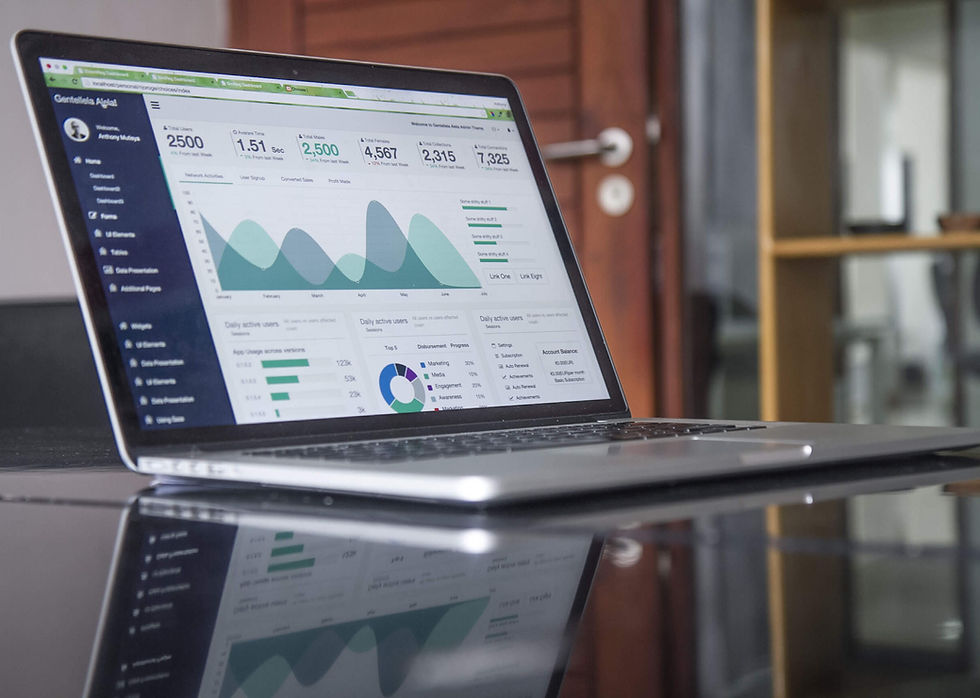Digital Transformation in Procurement: Revolutionizing Processes, Efficiency, and Cost Management
- James Dodds
- Jan 23
- 3 min read
In today’s fast-paced business environment, digital transformation has emerged as a game-changer for industries worldwide. Procurement, a traditionally manual and time-intensive function, is now experiencing a paradigm shift with the integration of digital tools and technologies. This transformation is not just enhancing operational efficiency but also enabling organizations to achieve significant cost savings and strategic advantages

The Role of Digital Tools in Modern Procurement
Digital tools are streamlining procurement processes by automating repetitive tasks, improving data visibility, and enabling better decision-making. Here are some key technologies driving this revolution:
Procurement Software Platforms: Platforms such as SAP Ariba, Coupa, and Oracle Procurement Cloud offer end-to-end solutions for sourcing, supplier management, contract management, and spend analysis. These tools reduce manual intervention, minimize errors, and ensure compliance.
Artificial Intelligence (AI): AI-powered analytics tools are providing insights into spending patterns, supplier performance, and market trends. AI also automates routine tasks like invoice processing and purchase order creation, freeing up procurement teams to focus on strategic initiatives.
Blockchain Technology: Blockchain ensures transparency and traceability in procurement by creating immutable records of transactions. This is particularly beneficial for industries with complex supply chains, such as pharmaceuticals and food.
Cloud-Based Solutions: Cloud technology enables seamless collaboration across geographies, providing real-time access to procurement data and facilitating remote approvals and negotiations.
Robotic Process Automation (RPA): RPA automates repetitive tasks such as supplier onboarding and data entry, reducing human errors and increasing efficiency.
Predictive Analytics: Leveraging historical data, predictive analytics tools forecast demand, optimize inventory levels, and anticipate potential disruptions in the supply chain.
Benefits of Digital Procurement
The adoption of digital tools is driving measurable improvements across several dimensions:
Efficiency Gains: Automation reduces the time spent on administrative tasks, enabling procurement professionals to focus on value-added activities.
Cost Reduction: Enhanced visibility into spend data helps identify cost-saving opportunities and prevent maverick spending.
Improved Supplier Relationships: Digital tools facilitate transparent communication, efficient contract management, and timely payments, fostering stronger partnerships.
Risk Mitigation: Advanced analytics identify potential risks in the supply chain, such as supplier insolvency or geopolitical disruptions, enabling proactive measures.
Sustainability: Digital solutions track and measure environmental and social compliance across the supply chain, supporting sustainability goals.
Case Studies of Successful Digital Procurement Implementations
1. Tesco: Improving Supply Chain Efficiency Tesco, one of the world’s leading food retailers, adopted AI-driven procurement solutions to enhance its supply chain efficiency. By analyzing customer purchasing patterns, Tesco optimized inventory management, reduced food waste, and ensured consistent product availability. The integration of digital tools also enabled real-time collaboration with suppliers, improving transparency and delivery timelines.
2. Walmart: Leveraging Predictive Analytics Walmart uses predictive analytics to optimize inventory management and supplier forecasting. By analyzing customer demand patterns, the retail giant ensures timely procurement of goods, reducing waste and stockouts. This digital approach has contributed to significant cost savings and enhanced customer satisfaction.
3. Sainsbury’s: Sustainability in Procurement Sainsbury’s implemented a blockchain-based solution to track the origin and sustainability of its products. This initiative ensured compliance with ethical sourcing standards and enhanced trust with environmentally conscious consumers. The transparency provided by blockchain technology helped Sainsbury’s strengthen its commitment to sustainability.
4. Unilever: Enhancing Supplier Collaboration Unilever implemented a digital procurement platform to manage its extensive supplier base more effectively. By integrating AI and analytics, the company achieved a 10% reduction in procurement costs while improving supplier compliance. The platform also streamlined the onboarding process, reducing the time taken to onboard new suppliers from weeks to just a few days.
Overcoming Challenges in Digital Transformation
While the benefits are substantial, organizations often face challenges in their digital transformation journey:
Change Management: Resistance to change among employees can slow down adoption. Training and clear communication about the benefits are essential.
Integration Issues: Ensuring compatibility between legacy systems and new digital tools can be complex and resource-intensive.
Cost of Implementation: Initial investments in digital tools can be high, though the long-term savings often justify the expense.
The Future of Digital Procurement
As technology continues to evolve, the possibilities for digital procurement are endless. Artificial intelligence will become more sophisticated, enabling deeper insights and more accurate decision-making. The adoption of Internet of Things (IoT) devices will enhance real-time supply chain monitoring. Additionally, the focus on sustainability will drive the development of digital tools that measure and report on environmental and social impacts.
Conclusion
Digital transformation is reshaping the procurement landscape, offering organizations unprecedented opportunities to improve efficiency, reduce costs, and gain strategic advantages. By embracing digital tools and technologies, businesses—particularly food retailers—can stay ahead of the curve, adapt to changing market demands, and create resilient, future-ready procurement processes. The success stories of companies like Tesco, Sainsbury’s, Walmart, and Unilever underscore the transformative potential of digital procurement—and serve as inspiration for organizations embarking on their own digital journeys.
Looking to explore how technology can support you and your company in the coming years? Contact us today to start your journey toward a smarter, more efficient procurement process.



Comments